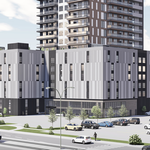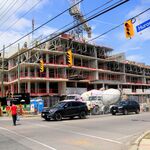Do you actually believe these projections? There is a tendency to systematically skew ridership projections to make them too low if the politicians want LRT and too high if the politicians want subway. I think they are deliberately underestimating population growth along the line. The projected population growth around Yonge/Eglinton and Don Mills/Eglinton is far too low to be realistic. For instance, box 287 is the northeast corner of Yonge/Eglinton, and they project absolutely NO population growth between 2006 and 2031. Well there are numerous condos under construction in this area already, so this is complete BS. The only way this is at all believable is if you assume that the Greenbelt Act is repealed and there is a drastic reduction in condo construction in Toronto, or there is a severe recession between now and 2031 and Toronto stops growing. There was a massive increase in condo construction after 2005 due to the Greenbelt Act which means higher ridership for pretty much any transit line, and the Miller administration didn't understand this.
In the case of the airport it is harder to tell, the main determinant of how many people will ride the LRT is how many people drive vs take transit, which in turn depends on how awful the traffic on the 401 is. The airport area seems to have lost a lot of jobs lately due to the 2015 recession and the decline in popularity of suburban office parks; there are for lease signs everywhere in Mississauga, so maybe overcrowding on the western end of the LRT won't be as bad as I thought. Then again, these projections seem to claim that a ridiculously low percentage of workers in Mississauga will use the LRT, and presumably that the vast majority will drive, and the traffic on the 401 is still horrible (though less horrible than it was a year ago before the 2015 recession) so this isn't very believable either.
There are various other problems with the projections, like the fact that it includes cancelled lines like Sheppard East LRT (probably doesn't make very much difference), the fact that it doesn't include newer projects like GO electrification (I think this might actually reduce ridership on certain parts of the LRT, particularly between Yonge and Black Creek), or the "SmartTrack" proposal, etc.
Let's hope that the ridership projections aren't extremely far off, or we will end up with severe overcrowding problems. I suspect that we will learn the hard way that underground LRT is a bad idea. It costs too much and has too little capacity. I am sick and tired of bad decisions being made about transit in Toronto due to politics.




